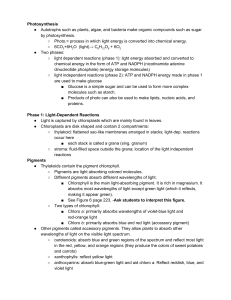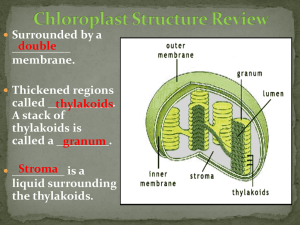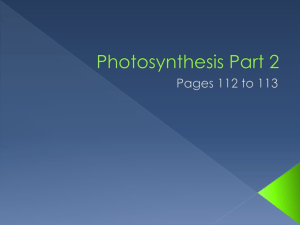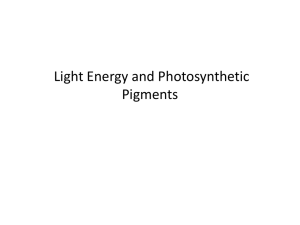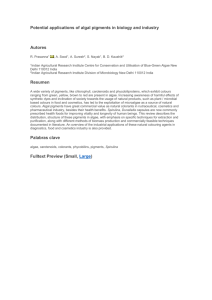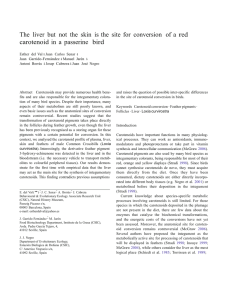Light Energy and Photosynthetic Pigments Chemical equation of photosynthesis:
advertisement
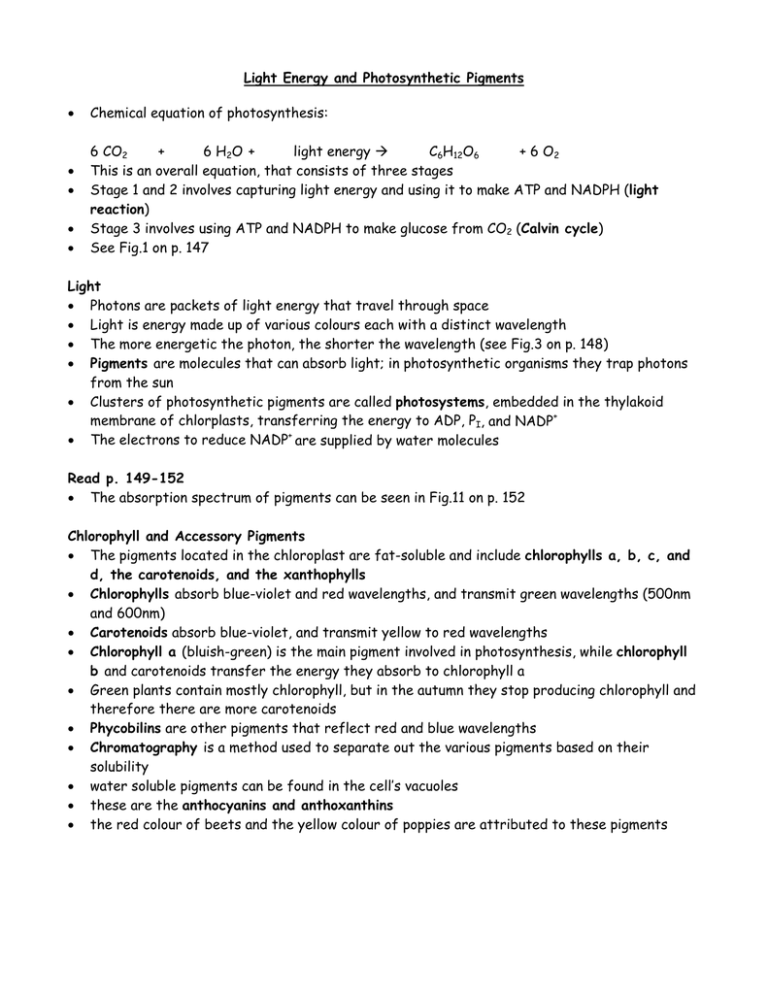
Light Energy and Photosynthetic Pigments Chemical equation of photosynthesis: 6 CO2 + 6 H2O + light energy C6H12O6 + 6 O2 This is an overall equation, that consists of three stages Stage 1 and 2 involves capturing light energy and using it to make ATP and NADPH (light reaction) Stage 3 involves using ATP and NADPH to make glucose from CO2 (Calvin cycle) See Fig.1 on p. 147 Light Photons are packets of light energy that travel through space Light is energy made up of various colours each with a distinct wavelength The more energetic the photon, the shorter the wavelength (see Fig.3 on p. 148) Pigments are molecules that can absorb light; in photosynthetic organisms they trap photons from the sun Clusters of photosynthetic pigments are called photosystems, embedded in the thylakoid membrane of chlorplasts, transferring the energy to ADP, PI, and NADP+ The electrons to reduce NADP+ are supplied by water molecules Read p. 149-152 The absorption spectrum of pigments can be seen in Fig.11 on p. 152 Chlorophyll and Accessory Pigments The pigments located in the chloroplast are fat-soluble and include chlorophylls a, b, c, and d, the carotenoids, and the xanthophylls Chlorophylls absorb blue-violet and red wavelengths, and transmit green wavelengths (500nm and 600nm) Carotenoids absorb blue-violet, and transmit yellow to red wavelengths Chlorophyll a (bluish-green) is the main pigment involved in photosynthesis, while chlorophyll b and carotenoids transfer the energy they absorb to chlorophyll a Green plants contain mostly chlorophyll, but in the autumn they stop producing chlorophyll and therefore there are more carotenoids Phycobilins are other pigments that reflect red and blue wavelengths Chromatography is a method used to separate out the various pigments based on their solubility water soluble pigments can be found in the cell’s vacuoles these are the anthocyanins and anthoxanthins the red colour of beets and the yellow colour of poppies are attributed to these pigments
